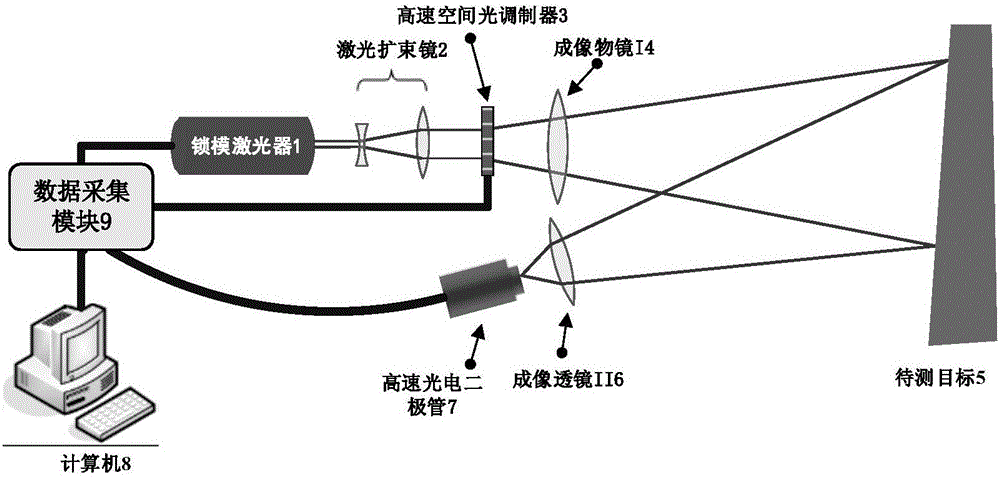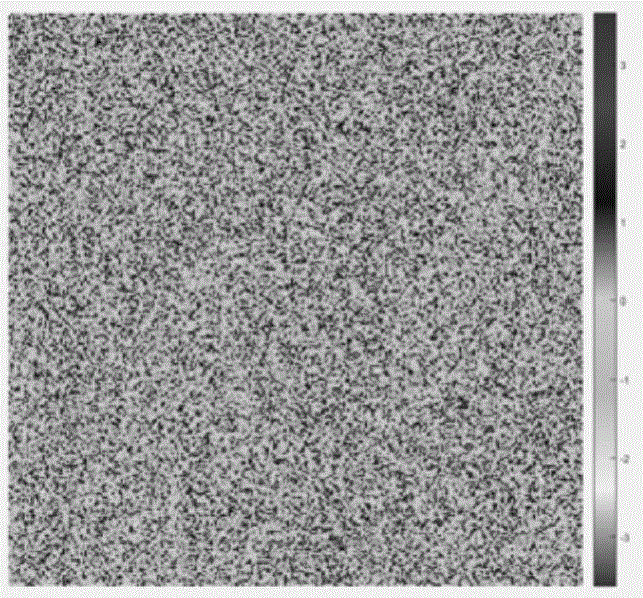Target identification device and method based on ghost imaging calculation
A ghost imaging and target technology, applied in the field of target identification devices based on computational ghost imaging, can solve the problems of restricting the spectral range of target identification applications, increasing hardware and computing costs, and achieving low power consumption, small size, and large spectral response range Effect
- Summary
- Abstract
- Description
- Claims
- Application Information
AI Technical Summary
Problems solved by technology
Method used
Image
Examples
Embodiment
[0030] use figure 1 The method for identifying a target identification device based on computational ghost imaging, the steps are as follows:
[0031] In the first step, for the target to be detected with a resolution of 256×256 (such as figure 2 As shown), the high-speed spatial light modulator is used to generate a random uniformly distributed 0-1 speckle matrix, and the identification target is sampled 3276 times through the data acquisition module, and the corresponding sampling rate is about 5% of the Nyquist limit. First-order correlation is used for imaging, and the imaging results are as follows: image 3 shown. Obviously, image 3 It is very vague and cannot be directly identified by traditional identification methods.
[0032] In the second step, non-linear correlation is used to achieve target identification. Using the reconstructed image of ghost imaging calculated at a very low sampling rate ( image 3 ) with standard patterns (as shown in Fig. 4(a) stan...
PUM
 Login to View More
Login to View More Abstract
Description
Claims
Application Information
 Login to View More
Login to View More - R&D
- Intellectual Property
- Life Sciences
- Materials
- Tech Scout
- Unparalleled Data Quality
- Higher Quality Content
- 60% Fewer Hallucinations
Browse by: Latest US Patents, China's latest patents, Technical Efficacy Thesaurus, Application Domain, Technology Topic, Popular Technical Reports.
© 2025 PatSnap. All rights reserved.Legal|Privacy policy|Modern Slavery Act Transparency Statement|Sitemap|About US| Contact US: help@patsnap.com



